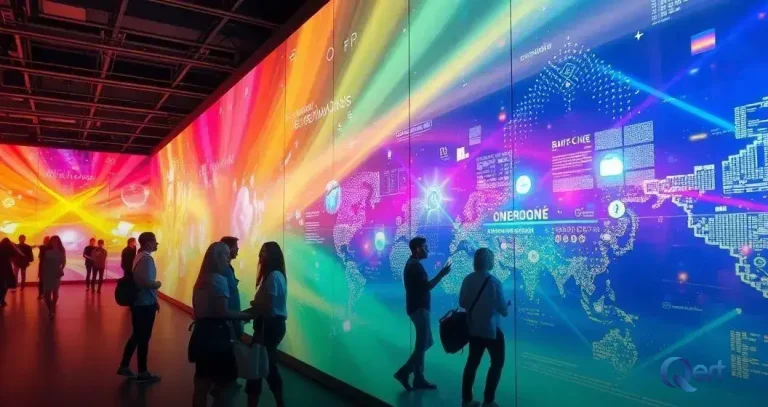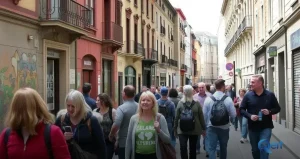ADVERTISEMENT
Interactive art shows invite audiences to engage with art in ways unlike any traditional exhibit. They combine creativity and technology, offering experiences that are both immersive and thought-provoking.
These shows break conventional boundaries, encouraging visitors to interpret and interact with art on a personal level. Every installation becomes a unique journey, shaped by each individual’s perspective.
Curious to see how art can come alive? Explore these captivating experiences and discover a world where creativity meets interaction!
What are Interactive Art Shows?
Interactive art shows are unique experiences where viewers can actively engage with the artwork. Unlike traditional art displays, these shows invite visitors to contribute to the art in real time. This blending of art and interaction creates a lively atmosphere that inspires creativity.
In an interactive art show, you might walk through a space where your movements affect the art around you. Some installations allow you to adjust colors, sounds, or even shapes as you explore. This hands-on experience makes art feel alive and personal, creating a deeper connection for each visitor.
The magic of interactive art shows lies in their ability to remove barriers. People of all ages and backgrounds can participate, express their creativity, and enjoy a shared experience. This is what makes interactive art shows so special—they transform viewers into active creators.
The History of Interactive Art
The history of interactive art dates back several decades, but it really gained momentum in the 1960s. Early artists began to explore new ways to engage audiences by incorporating technology and performance into their works. This shift allowed people to become part of the art experience, rather than just observers.
In the 1980s and 1990s, interactive art became more popular as technology evolved. Artists used computers and digital media to create installations that responded to the actions of the audience. This innovation changed how art could be experienced, making it more accessible and engaging for everyone.
Today, interactive art shows have multiplied, as artists continue to push boundaries. They blend sound, visuals, and even social interaction, allowing viewers to influence the art around them. This rich history has paved the way for many creative opportunities, making interactive art a vital part of the modern art scene.
Key Features of Interactive Art Shows
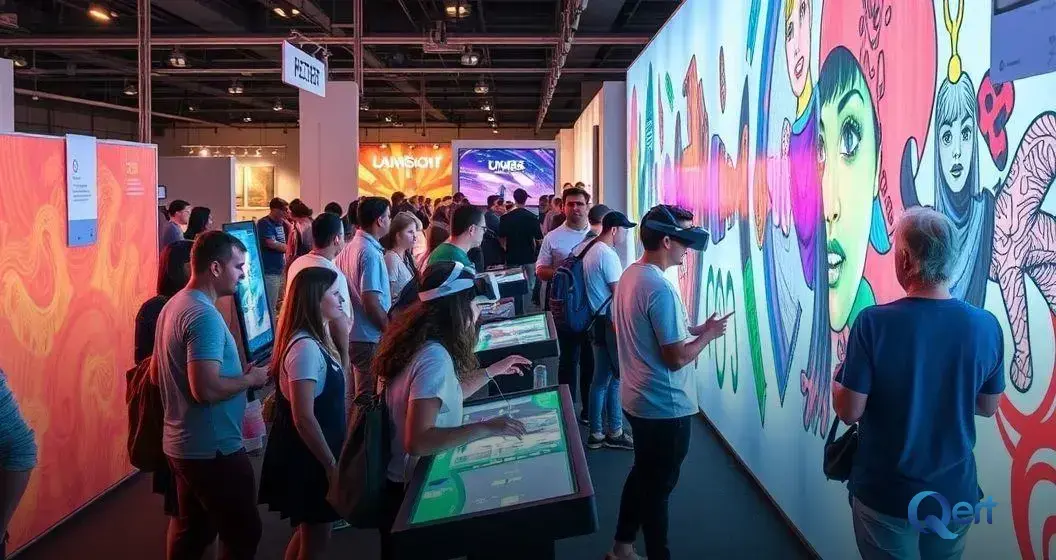
One of the key features of interactive art shows is audience participation. Visitors are not just passive viewers; they actively engage with the art, influencing its outcome. This connection allows each person to experience the art differently, making every visit unique and personal.
Another important feature is the use of technology. Interactive art shows often incorporate elements like virtual reality, sensors, and projections. These tools create dynamic experiences that respond to movement, touch, or sound, adding an exciting layer to the artwork.
Finally, interactive art shows often foster a sense of community. They encourage collaboration among visitors, inviting them to share ideas and create together. This social aspect enhances the experience and makes art a shared journey, rather than an individual one.
Impact of Technology on Art
Technology has greatly impacted art by changing the way artists create and present their work. With tools like graphic design software and digital cameras, artists can explore new ways to express their ideas. This shift allows for greater experimentation and innovation within the artistic process.
Interactive art shows highlight how technology enhances the viewer’s experience. By incorporating virtual reality, augmented reality, and interactive installations, art becomes more immersive. This engagement helps audiences connect with the artwork on a deeper level, making the experience memorable.
Moreover, technology has expanded the reach of art. Through online galleries and social media, artists can share their work with a global audience. This accessibility allows for diverse voices and perspectives to be heard, enriching the art community and inspiring collaboration.
Popular Interactive Art Installations
One popular interactive art installation is “The Obliteration Room” by Yayoi Kusama. This exhibit starts as a completely white room filled with furniture and objects. Visitors can then add colorful dot stickers to the surfaces, transforming the space into a stunning burst of color. This playful interaction encourages creativity and personal expression.
Another well-known installation is “TeamLab Borderless,” located in Tokyo, Japan. This immersive experience uses digital projections to create stunning visuals that react to the movement of guests. Visitors can walk through different rooms filled with beautiful designs, where the art seems to come alive around them, breaking the boundary between the artwork and the audience.
Lastly, “Rain Room” by Random International is an unforgettable installation where it rains indoors. However, visitors can walk through it without getting wet, thanks to motion sensors that stop the rain in their immediate vicinity. This unique blend of technology and art highlights the relationship between nature and human interaction, leaving a lasting impression on all who enter.
How to Experience Interactive Art
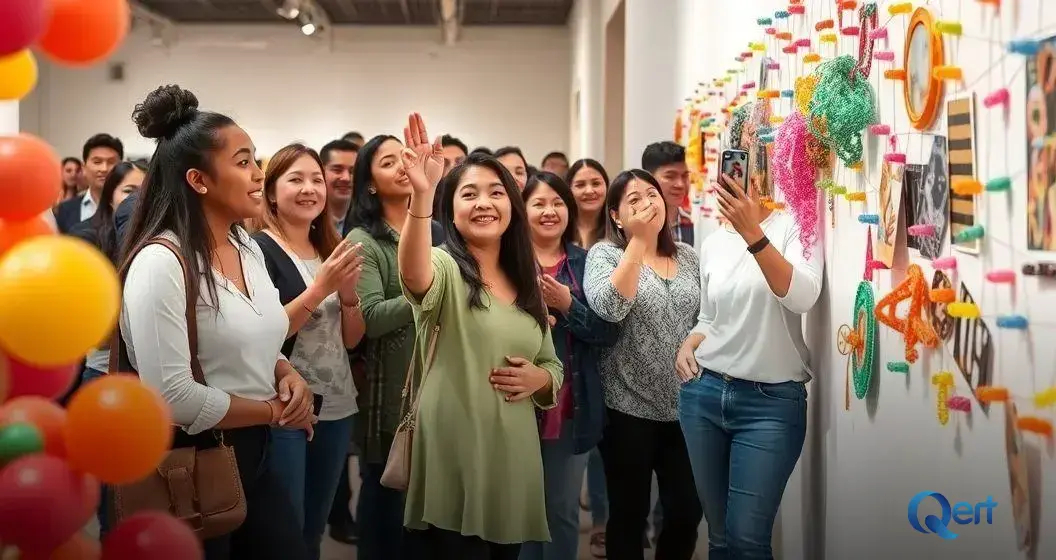
To experience interactive art, start by visiting local galleries or museums that feature interactive installations. Check their websites or social media pages for upcoming events and exhibitions. Many art shows encourage hands-on participation, allowing you to explore the art closely and engage with it in unique ways.
When you arrive, don’t be shy! Dive in and interact with the art. Touch, move, or manipulate the pieces as intended. The artists design these experiences to invite your input, so your participation is essential. Take your time and notice how your actions change the art around you.
Finally, share your experience with others. Talk about what you saw and how you felt while engaging with the installations. Consider taking photos to remember the moments. Sharing stories helps keep the art alive and inspires others to explore interactive art shows, creating a broader community of art lovers.
The Future of Interactive Art Shows
The future of interactive art shows looks bright as technology continues to advance. We can expect more immersive experiences, with artists using virtual and augmented reality to create stunning environments. These technologies will allow visitors to step into the artwork, making each experience feel even more personal and engaging.
Additionally, artificial intelligence is likely to play a role in shaping interactive art. AI can analyze visitor interactions in real time, adapting the art to enhance engagement. Imagine walking through an installation where the art changes based on your emotions or choices, making every visit unique and exciting.
Collaboration will also be key in the future of interactive art shows. Artists, technologists, and audiences will come together to create new forms of art. This teamwork fosters innovation, ensuring that interactive art remains a dynamic and evolving field. As more people get involved, the possibilities for creativity will be endless.
Interactive Art Shows Around the World
Interactive art shows can be found all around the globe, showcasing diverse cultures and creative expressions. In Tokyo, the digital art collective TeamLab hosts exhibitions where visitors can step into vibrant, immersive environments. These installations use light and sound to create stunning visuals that respond to movements, captivating audiences of all ages.
In Europe, the “Van Gogh Alive” exhibition has taken several cities by storm. This immersive show combines the brilliant colors of Van Gogh’s paintings with music and digital projections. Guests walk through large halls where the artwork is brought to life, providing a rich, sensory experience that allows them to connect deeply with the art.
New York City is also famous for its interactive art installations. The Museum of Modern Art often features installations that invite visitors to engage with the art physically. These shows encourage all kinds of participation, making art accessible and enjoyable for everyone. From large sculptures to digital displays, NYC’s interactive art scene is vibrant and ever-evolving.
Tips for Attending Interactive Art Shows
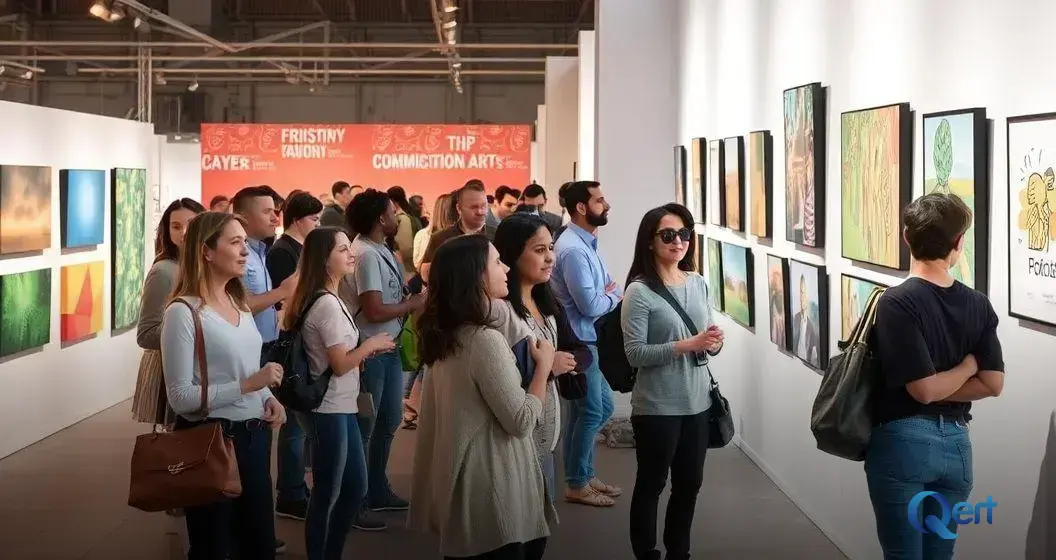
When attending interactive art shows, wearing comfortable clothing and shoes is very important. Since you may spend a lot of time walking or moving around, being comfortable will help you enjoy the experience fully. Don’t hesitate to dress for the occasion, especially if the installation is themed or has special requirements.
Another tip is to go with an open mind. Interactive art often encourages exploration and creativity, so try participating in various ways. Touch the exhibits, ask questions, and engage with the artwork. Embrace the experience, as it can turn into something amazing when you actively participate.
Finally, consider visiting during off-peak hours if possible. This will give you more time and space to explore the installations without feeling rushed. Attending during quieter times can help you connect more deeply with the art and allow you to fully take in all the details that make each piece unique.
Interactive art shows blend creativity with technology, offering unique experiences that engage all the senses. These installations invite visitors to step beyond observation, allowing them to touch, move, and interact with the art. This powerful engagement helps create memorable moments that can inspire personal reflection and creativity.
Participants find joy in collaborating with others during these exhibits. Whether it’s adding a personal touch to a large mural or experiencing a virtual reality world together, the sense of community enhances the overall enjoyment. The shared experiences often spark conversations and inspire new ideas about the art and its meaning.
Visiting interactive art shows can also encourage people to consider their own creativity. Each installation encourages exploration and challenges traditional notions of art. By participating actively, visitors might discover new skills or passions that could lead them to pursue their artistic interests further.

